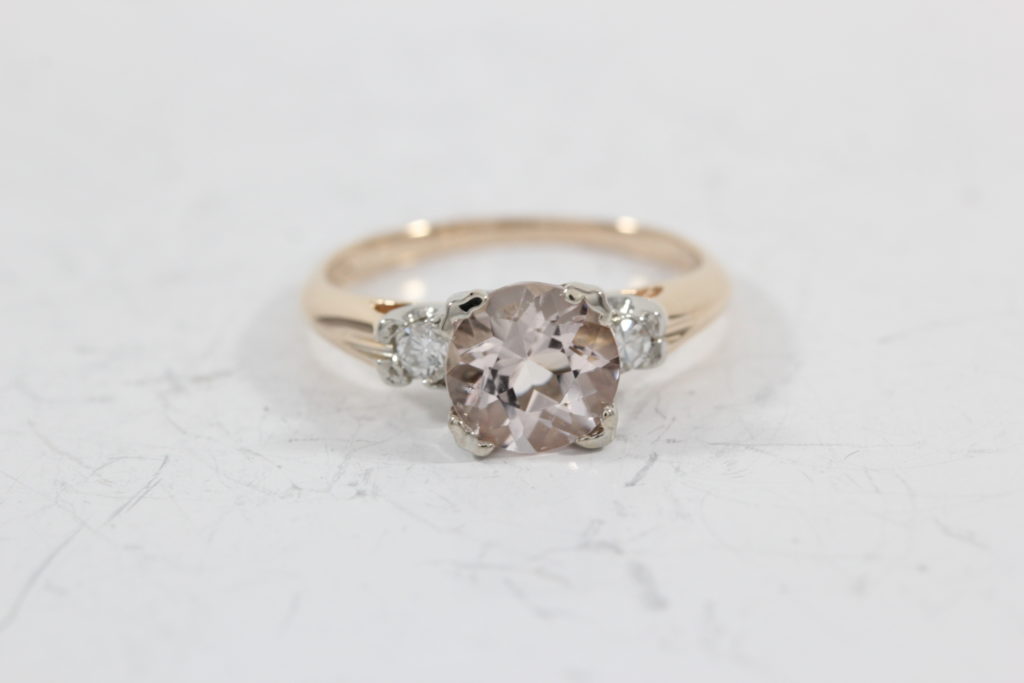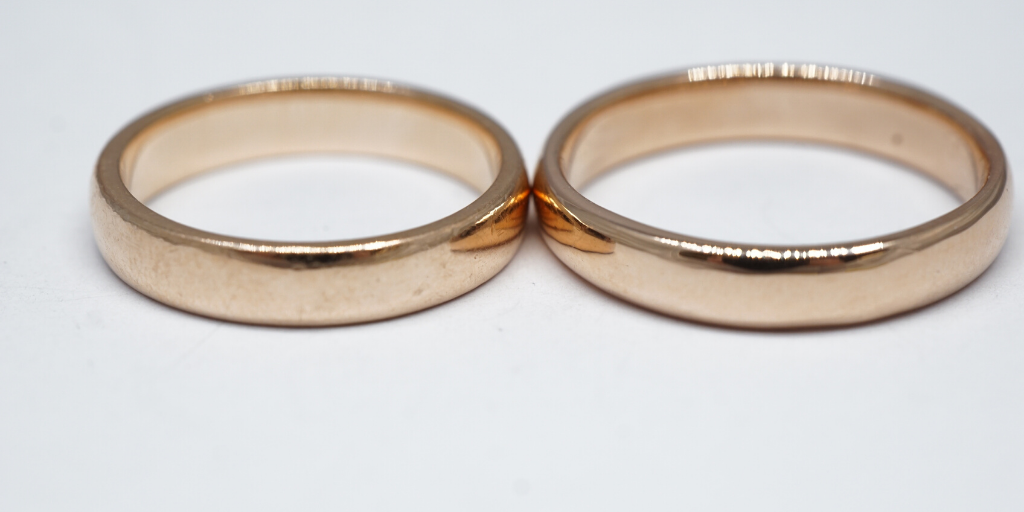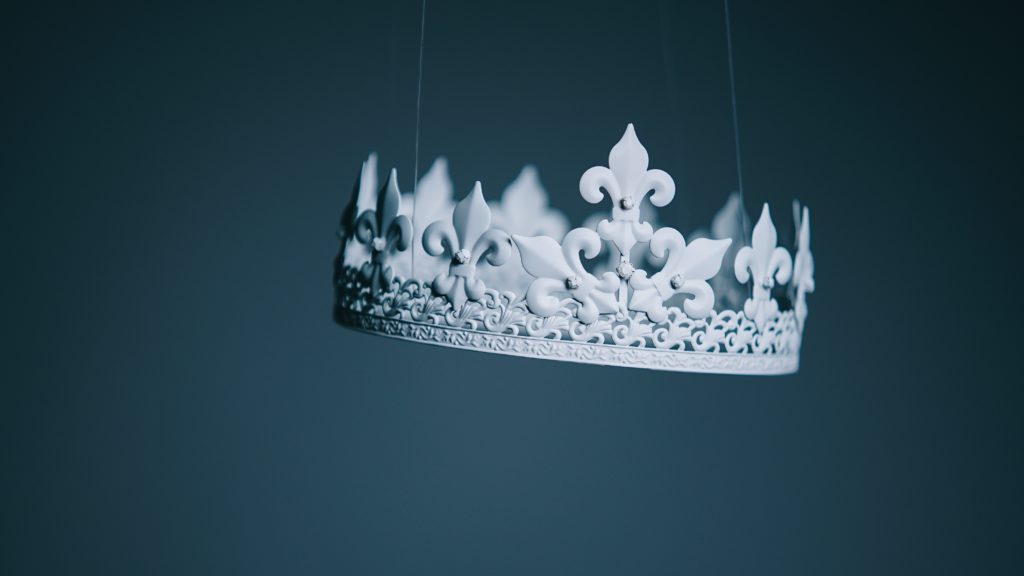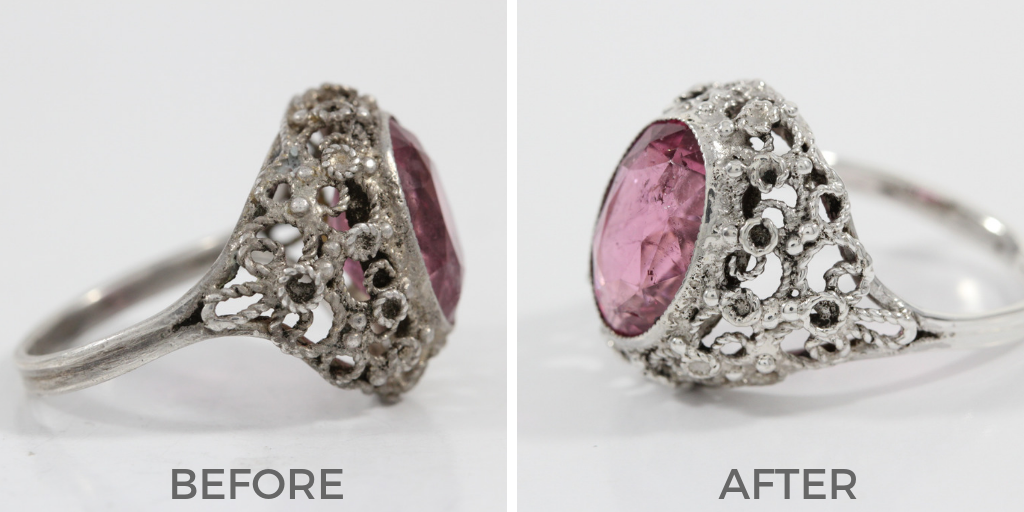How to Add Gems to a Ring
Written by Annabelle
April 17, 2020

Feeling like your ring is a little plain? Looking to jazz it up with some diamonds or gemstones but not sure how to get started? Here’s how to add gems to a ring; read on to learn more about the process.
The Process of Adding Gems To Your Ring
1. Determine what you want to modify

The ring was designed for a marquise diamond; a new head was created to set it with a larger rectangle tourmaline.
If you’re looking to change up the design of your ring, think about what it is that you want to switch up. Is it the center stone? Do you want a different size, shape, or color? Or do you want to add more stones around it, like a halo or extra side stones? Depending on what you want, this will affect the modification process.
2. Design Examination
Once you’ve figured out what you want, it’s time to consult with a jeweler. The jeweler looks at your item and determines whether or not the modification is doable; certain designs can’t be worked with as it will destroy the look and structural integrity of the ring. For instance, rings with elaborate center stone settings cannot be modified to set a new stone in a different shape and size. We’ve compiled a list of common ring types below:
- Prong head solitaire: A very simple design that can be easily modified for a different center stone. The jeweler can remove the original head by sawing it off and placing a new one on top.

This vintage solitaire has a very high prong head.
- Plain wedding band: This is the best type of ring to modify since it has no designs whatsoever. A stone can be set in multiple locations since the metal is blank.

These plain gold bands are perfect for modification.
- Elaborate designs: For rings that are extremely complex, the only modification that can be made is the addition of a new center stone in the same shape and dimensions as the original stone. The cut and color can be different, but the existing setting cannot be modified for anything else.

This Tacori ring has a very complex design and milgrain patterns on the shoulders.
3. Stone Sourcing
After the jeweler’s evaluation and your confirmation to proceed, the jeweler sources the new stones if you are not providing them with loose ones. Depending on the type and size of the stone, this process can range from 1 to 4 weeks, especially if the stone has to be sourced from overseas. If the stone is being specially cut, you can expect an additional 1 week on top of the sourcing turnaround time.
4. Stone Setting
Now that the stone’s sourced, the jeweler sets the stone. This can be done via several methods:

This ring had a head replacement; the customer wanted a basket setting for the stone.
- Head replacement: If the jeweler determines that the original head can be removed, they saw it off and replace it with a new setting that accommodates the new stone.
- Additional settings: A modification method used to add side stones to an existing ring. A jeweler can either add prong settings or build a bezel using wire to set additional stones.
- Flush setting: This process involves setting the stone directly into the metal, requiring the jeweler to create a hole in the ring. This is best used for plain bands and additional side stones.
Custom Creation
If the jeweler’s determined that your ring is not modifiable, you can request for a custom ring replication. The jeweler takes the design of your item and creates a 3D design that is modified to your tastes. The 3D design is then used to create a completely new ring.
Now you know how to add gems to a ring! If you have something you want to modify, comment below and we can help you out.


